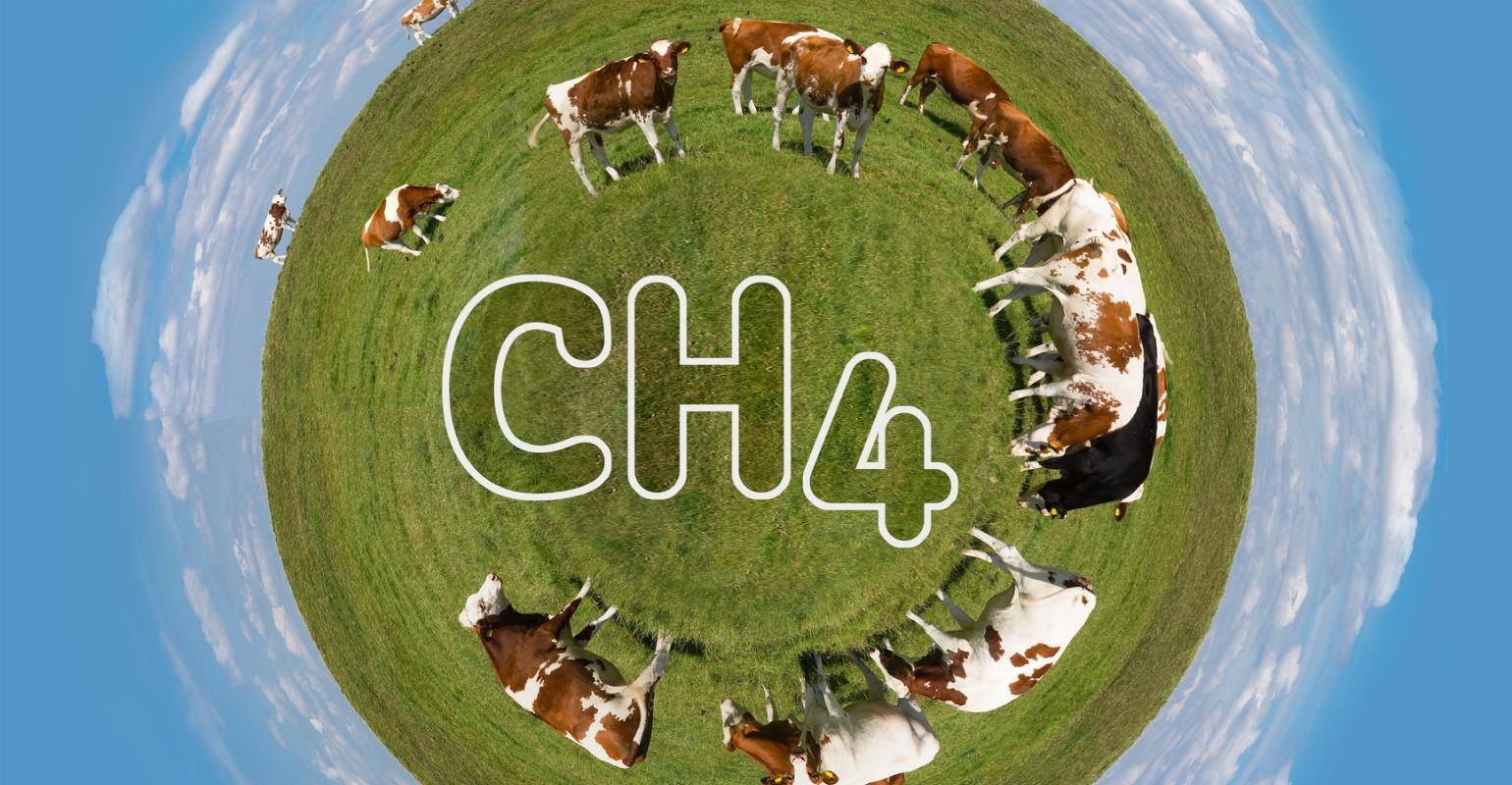A judicial ruling has determined that “Gruyere” is a generic style of cheese that can come from...
Designing a More Climate-friendly Cow?

The world has spent a century pumping up cows to produce more milk and meat. Can we now reinvent them to produce less methane?
In a pastoral scene apparently unchanged for centuries, Holstein cows calmly graze the electric green fields of Peter Hynes’s farm in County Cork, Ireland. But thanks to intensive breeding and technological advances, Hynes’s 180 dairy cows produce over twice the amount of milk their predecessors did even 50 years ago. The problem is, until recently, they produce just as much methane.
Each of the world’s 1.6 billion cows produces up to 500 liters of the gas every day. At least, most of them do. Hynes’s heifers are different. His is the first commercial farm in Ireland to feed the cows Bovaer, a supplement that reduces the methane they emit by 30% or more. Hynes’s herd is at the vanguard of a new movement to reinvent the cow, a movement that includes breeding programs, genetic engineering, and even gas masks.
But are such high-tech innovations a helpful step towards meeting our climate goals, or just a band-aid?
First up, cow biology 101. Strictly speaking, we shouldn’t blame cows for producing all that methane. The guilty parties are actually billions of microbes in their rumens—a cow’s largest stomach compartment. These microbes enable cows to digest the tough fibers in grass but generate hydrogen and carbon dioxide along the way, a process known as enteric fermentation. Enzymes in the rumen then combine those gasses to form methane.
Researchers have long experimented with making cows better global citizens by feeding them everything from turmeric to seaweed. One kind of seaweed called Asparagopsis taxiformis has been shown to reduce methane by up to 95% in cows. Scientists think the seaweed binds to the enzymes that convert hydrogen and CO2 to methane, reducing their activity. However, A. taxiformis only grows in parts of Australia and New Zealand, and harvesting enough to feed billions of cattle would be simply impossible.
Bovaer targets the same enzymes, temporarily suppressing them to slow down methane production. A teaspoon of white powder is dropped into the cows’ feed and starts slowing down methane production within 30 minutes. Its key advantage is that it can be synthesized, cheaply and at scale, in factories worldwide.
“It was not that we just found something on the shelf, which was designed for something else and relabeled for methane production,” says Maik Kindermann, the scientist at the Dutch multinational DSM who invented Bovaer. “It’s uniquely made for emission reduction in the agricultural sector.” It is already being fed to around 100,000 cows worldwide, mostly in Europe, according to the company. In January, Canada also approved its use.
Because the compound stays in the cow’s stomachs, it doesn’t impact the animal’s milk, meat or poop, says Frank Mitloehner, an air quality specialist in the Department of Animal Science at UC Davis. That’s beneficial because some dairies want to produce yet more methane from the manure, to burn as a renewable fuel.
Bovaer is expected to hit the U.S. market in the second quarter of 2024—leading to excitement in states like California, which is seeking to reduce dairy methane emissions 40% by 2030. “Many of the agencies in the U.S. are anxious that the compound will make it to market because it is one of the most effective reducers of methane,” says Mitloehner.
But Bovaer isn’t a climate silver bullet, says Christopher Gambino, a sustainable livestock analyst on the Food and Agriculture team with the Breakthrough Institute, an environmental research center based in Berkeley, California. Yes, it’s been proven effective and safe, but it has limitations. “It’s a tool,” he says, “and we need to find all the tools.”
First off, Bovaer wears off after just a few hours. When cows aren’t being fed the supplement, their methane burps return with a vengeance—something known as termination shock. Are farmers really ready to commit to using it in perpetuity?
Additionally, not all cows are regularly fed in managed systems like feedlots and barns. Gambino points out that beef cows typically spend six to eight months eating grass on pasture, where 77% of their methane emissions occur. DSM says it is working on a slow-release formulation that would work for these animals.
EDITOR’S TAKE:
Cow farts seem to attract a lot of attention for such a seemingly small contribution (less than 10%) to overall greenhouse gas emissions. Even the uber wealthy like Bill Gates, who has invested over $26 million to develop a anti-fart/burp vaccine for cattle, want in the game. Would we be better off focusing on how to eliminate world hunger or researching real advances in sustainable energy? It seems that every attempt to stop cow farts is only a band-aid at best. Who knows maybe someone may discover a way to eliminate all farts – then the world would truly be a better place. In the meantime, it would be wise to continue to focus on selling parts, service and trucks to farmers/ranchers in your area.







